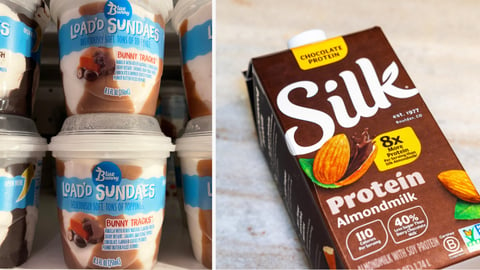You Have the Data, So Now What?
The CPG industry has been rapidly evolving over the past few years, with brands looking for new ways to capture and use data to better understand and engage with their customers. Food and beverage brands especially have been leading the zero-party data charge with engagements such as recipe match quizzes, flavor finders, and personality quizzes. While brands have made leaps when it comes to zero-party data capture, many have amassed significant data but don’t know how to activate it.
For those unfamiliar with the term, zero-party data refers to information that consumers voluntarily share with brands, such as their preferences, interests, and behaviors. Unlike first-party data, which is generated through observed behavioral and transactional actions, consumers actively provide zero-party data, often in exchange for some form of value or personalized experience.
CPG brands have been leading the charge in capturing zero-party data, recognizing that this information is critical to understanding and responding to changing consumer preferences and behaviors. This trend is largely driven by the tracking changes made by Apple and Google as well as increasing privacy legislation.
It is also growing due to the rise of retail media networks, which are creating a new version of the walled garden that threatens to limit brands' access to valuable customer data.
See also: Where CPG IT Teams Fit in the Retail Media Puzzle
The importance of zero-party data to CPG brands cannot be overstated. Historically, these brands have relied on retailers to provide them with customer data, leaving them at the mercy of the retailers' own priorities and limitations. With the ability to capture zero-party data, CPG brands can take control of their own data destiny, gaining new insights into their customers and creating more personalized and effective marketing campaigns.
But while CPG brands have become increasingly adept at capturing zero-party data, they are still struggling to activate it in meaningful ways. Many marketers are unsure of how to use this data to create truly personalized experiences for customers and are struggling to connect this data to other sources of customer information to create a truly omnichannel experience.
This is a critical challenge for CPG brands, as the value of zero-party data lies in knowing which data points are actually valuable for driving action. The shift has gone from big data without purpose to small data that is truly focused on the next best action based on where the consumer is in the life cycle. Without
Without a clear understanding of how to identify the data that matters and activate it, brands risk missing out on the full value of their investments in data capture.
So how can CPG brands overcome this challenge and truly unlock the value of their zero-party data? The key lies in building a data-driven marketing strategy that focuses on smaller and more meaningful data that is used not only in the moment but connects to their future engagement with the brand.
First and foremost, CPG brands need to focus on what data they are capturing and why. For too long our industry has operated on demographics, behavioral data, and even some purchase data but this data is riddled with issues when it comes to accuracy, intent, timeliness, and importance. For example, is age a critical factor for purchase?
If you are a brand, maybe that is true, but for most food brands, age has little to do with what products you would recommend to them. Food allergies, flavor profile, and cooking sophistication level are all more important attributes to connect your products to your consumers in a meaningful way.
A simple way to validate data importance is to ask yourself how you would use that specific data point to enhance the consumer's experience. If you don’t have an answer, I would argue you are focusing on the wrong data points.
Second, CPG brands should start small when it comes to activating the data they collect. The dream of fully personalized, fully omnichannel doesn’t happen overnight, so focus on the easy wins first.
Here is the “low hanging fruit” when it comes to activating the zero-party data collection:
1. Email Follow Up
Once a consumer completes an experience, the easiest thing to do is to segment your email by one or two important data points you collected to show that you are listening and continuing to deliver value to them on their terms. It could be as simple as restating the outcome they got matched to or you could break it out based on an important preference.
2. Audience Building
As tracking changes continue to impact the quality and scale of social platform intent based audiences, bringing your own data into these platforms will create more effective and accurate look-alike audiences. One brand saw a 5x increase in engagement using their own zero-party data vs. a third-party intent audience.
3. Segmentation/Personas
Most brands have built their segmentation strategies through a combination of qualitative and first- and third-party quantitative data sources. The missing ingredient is often the “why” data which makes for a rational segmentation. By incorporating and reworking segmentation strategies to include consumers’ intentions and motivations, you can create a more well-rounded segmentation that brings more emotional factors into the fold and will resonate more effectively with those audiences.
The mastery of zero-party data capture by CPG brands is an exciting development in the industry. However, the true unlock happens when we understand which data attributes matter to drive better value-based consumer experience and when we put what we learn into good use to continue to improve their experience with the brand. Only then can CPG brands fully realize the potential of their investments in data capture and continue to drive growth and success in the rapidly evolving CPG landscape.
Pam Erlichman is the Chief Evangelist Officer for Jebbit.




